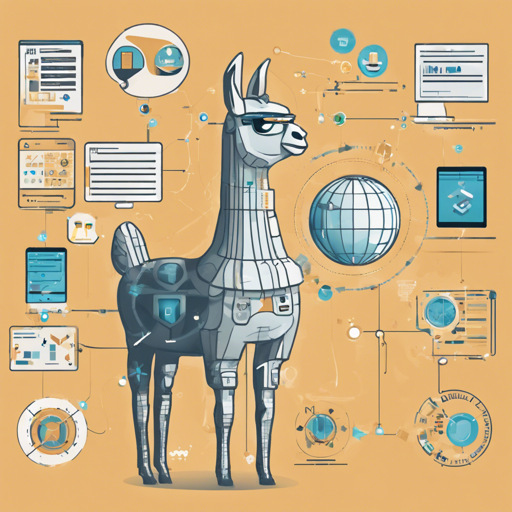Welcome to the world of advanced language models with the Meta Llama 3.1 collection! In this guide, we’ll cover everything you need to know about using the Meta-Llama-3.1-8B-Instruct quantized model, from installation to running your first inference.
Model Overview
The Meta Llama 3.1 collection is a powerful set of multilingual large language models (LLMs) that have been pretrained and tuned for instructions. The sizes available include 8B, 70B, and 405B, optimized specifically for diverse dialogue scenarios. This model outperforms many existing models on industry benchmarks, ensuring top-notch performance.
Installation Steps
To successfully operate the Llama 3.1 model, you’ll need to ensure a few prerequisites are met. Here’s a step-by-step guide:
- First, make sure you have torch and bitsandbytes installed. Run the following command:
pip install "torch>=2.0.0" bitsandbytes --upgradepip install "transformers[accelerate]>=4.43.0" --upgradeRunning Inference
Once you have the necessary packages installed, you can proceed to run the inference with the model. Think about using this language model like preparing a meal; you gather the ingredients (data and packages), then you mix everything according to a recipe (model code) to get a delicious result (output). Here’s how you can do it:
import torch
from transformers import AutoModelForCausalLM, AutoTokenizer
model_id = "hugging-quants/Meta-Llama-3.1-8B-Instruct-BNB-NF4"
prompt = [
{"role": "system", "content": "You are a helpful assistant, that responds as a pirate."},
{"role": "user", "content": "What's Deep Learning?"},
]
tokenizer = AutoTokenizer.from_pretrained(model_id)
inputs = tokenizer.apply_chat_template(prompt, tokenize=True, add_generation_prompt=True, return_tensors="pt").cuda()
model = AutoModelForCausalLM.from_pretrained(
model_id,
torch_dtype=torch.bfloat16,
low_cpu_mem_usage=True,
device_map="auto",
)
outputs = model.generate(inputs, do_sample=True, max_new_tokens=256)
print(tokenizer.batch_decode(outputs, skip_special_tokens=True))This code instantiates the model, prepares the input prompt, and then generates a response based on that prompt. By adjusting the prompt content, you can make the assistant respond in various contexts!
Troubleshooting
If you encounter any issues during installation or while using the model, try the following troubleshooting tips:
- Ensure that your GPU has at least 6 GiB of VRAM available for loading the model checkpoint.
- If you’re running into memory issues, try reducing the maximum number of new tokens in
model.generate(). - Confirm you’ve installed the correct versions of torch and transformers packages.
- For more insights, updates, or to collaborate on AI development projects, stay connected with fxis.ai.
Final Thoughts
At fxis.ai, we believe that such advancements are crucial for the future of AI, as they enable more comprehensive and effective solutions. Our team is continually exploring new methodologies to push the envelope in artificial intelligence, ensuring that our clients benefit from the latest technological innovations.

